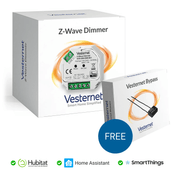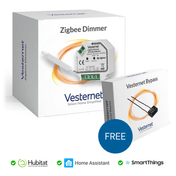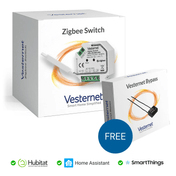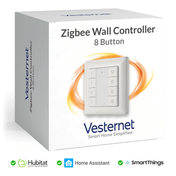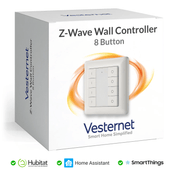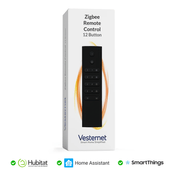Indoor air pollution has become a critical health concern, with PM2.5 particles, volatile organic compounds, and CO2 levels often exceeding safe thresholds in homes and offices, contributing to respiratory issues, allergies, and reduced cognitive performance. Modern buildings, while energy-efficient, can trap pollutants from cooking, cleaning products, furniture off-gassing, and outdoor contamination, creating environments that are often more polluted than the air outside.
Professional-grade air quality sensors equipped with advanced sensors provide real-time detection of multiple pollutants, enabling automated ventilation control and creating healthier living environments through precise monitoring and smart home integration. These sophisticated systems go beyond basic temperature readings, offering comprehensive analysis of invisible threats that traditional home monitoring cannot detect.
This comprehensive guide examines 10 essential considerations for selecting professional air quality monitoring systems, covering sensor technologies, smart integration capabilities, and practical implementation strategies for optimal indoor air management. Whether you're protecting family health, optimising office productivity, or maintaining commercial spaces, understanding these factors ensures you choose the right monitoring solution for your specific needs.
1. PM2.5 Detection Accuracy and Range
PM2.5 particles represent one of the most dangerous forms of indoor air pollution, measuring just 2.5 micrometers or smaller—roughly 30 times smaller than the width of a human hair. These microscopic particles penetrate deep into lung tissue and can enter the bloodstream, making accurate detection crucial for protecting respiratory health and preventing long-term cardiovascular complications.
Key PM2.5 monitoring specifications:
- Detection range from 0-999.9 µg/m³ for comprehensive coverage
- Real-time measurement updates every few seconds
- WHO air quality guideline compatibility (15 µg/m³ annual average)
- Automated threshold alerts for immediate health warnings
Professional monitors utilise laser scattering technology to count individual particles with exceptional precision, distinguishing between different particle sizes and providing accurate concentration measurements that enable informed health decisions and automated air purification responses.
2. Multi-Parameter Monitoring Capabilities
Comprehensive indoor air quality assessment requires monitoring multiple environmental factors simultaneously, as pollutants often interact and compound their effects on human health. Single-parameter monitors provide limited insight, while integrated multi-sensor systems deliver complete environmental analysis for thorough air quality management.

Essential monitoring parameters:
- Temperature and humidity for comfort and mould prevention
- CO2 levels for ventilation adequacy and cognitive performance
- Total Volatile Organic Compounds (TVOC) for chemical contamination
- Particulate matter (PM2.5/PM10) for respiratory protection
- Additional sensors for motion, noise, and illumination tracking
Multi-parameter systems provide context for air quality readings—high humidity combined with elevated particles might indicate mould issues, while rising CO2 with VOCs suggests inadequate ventilation during cooking or cleaning activities. This comprehensive approach enables more accurate environmental assessment and targeted remediation strategies.
3. Smart Protocol Compatibility and Integration
Modern air quality monitors integrate seamlessly with smart home ecosystems through wireless protocols like Z-Wave Plus and Zigbee, enabling automated responses and comprehensive environmental control. Protocol selection impacts device compatibility, network reliability, and long-term system expansion capabilities.

Z-Wave Plus advantages:
- Excellent range and wall penetration for large homes
- Mature ecosystem with extensive device compatibility
- Reliable mesh networking with self-healing capabilities
- Professional integration options for commercial applications
Zigbee benefits:
- Lower power consumption for battery-powered devices
- Rapid response times for real-time monitoring
- Growing ecosystem with major platform support
Both protocols enable sophisticated automation scenarios—monitors can trigger air purifiers when particle levels rise, adjust HVAC systems based on CO2 readings, or send alerts when VOC concentrations exceed healthy thresholds, creating responsive indoor air quality management systems.
4. Real-Time Display and Data Visualisation
Clear visual feedback transforms complex air quality data into actionable information, helping users understand environmental conditions and make informed adjustments to their indoor spaces. Display technologies range from basic LED indicators to comprehensive TFT screens with detailed parameter readings.
Display technology options:
- Colour TFT screens showing multiple parameters simultaneously
- LED indicator lights with colour-coded air quality status
- Mobile app interfaces for remote monitoring and historical data
- Wall-mounted displays for permanent monitoring stations
Advanced displays present information hierarchically—immediate health risks highlighted prominently, while detailed measurements remain accessible for users seeking comprehensive environmental data. Historical trending helps identify patterns, such as daily pollution cycles or seasonal variations that inform long-term air quality strategies.
5. Power Supply Options and Installation Flexibility
Power supply choices significantly impact monitor placement options, maintenance requirements, and long-term operational costs. Understanding the trade-offs between hardwired 230V connections and battery-powered flexibility ensures optimal sensor positioning for accurate readings.
230V hardwired advantages:
- Permanent installation with continuous operation
- No battery replacement requirements
- Suitable for always-on monitoring applications
- Often includes backup battery for power outage protection
Battery-powered benefits:
- Flexible placement without electrical constraints
- Easy relocation for different monitoring needs
- Simplified installation without electrical work
Optimal sensor positioning requires 1.5-metre mounting height away from heat sources, direct sunlight, and air currents that could affect readings. Battery-powered units offer placement flexibility but require regular maintenance, while hardwired systems provide consistent operation with minimal intervention.
6. Volatile Organic Compound (VOC/TVOC) Detection
Volatile Organic Compounds represent a diverse group of chemicals emitted by cleaning products, furniture, carpets, paints, and building materials, contributing significantly to indoor air pollution and causing headaches, irritation, and long-term health effects. Professional VOC monitoring enables detection of these invisible contaminants before they impact occupant health.
Common VOC sources in homes:
- Cleaning products and air fresheners releasing chemical vapours
- New furniture and carpets off-gassing formaldehyde
- Paint and building materials emitting benzene compounds
- Cooking activities producing aldehydes and other organic compounds
Advanced monitors feature four-level TVOC classification systems with adjustable threshold alerts, providing graduated warnings from 'good' air quality through 'moderate' and 'unhealthy' levels to 'hazardous' conditions requiring immediate action. This nuanced approach enables proportionate responses rather than simple binary alerts.
7. CO2 Concentration Monitoring and Ventilation Control
Carbon dioxide concentration serves as an excellent proxy for overall indoor air quality and ventilation adequacy, with elevated levels indicating insufficient fresh air exchange that allows other pollutants to accumulate. CO2 monitoring enables optimised ventilation control while maintaining energy efficiency.

CO2 level guidelines:
- Below 1000ppm: Good air quality for most activities
- 1000-1500ppm: Acceptable but ventilation recommended
- Above 1500ppm: Poor air quality requiring immediate action
- Above 2000ppm: Drowsiness and cognitive impairment likely
Professional monitors offer detection ranges from 0-2000ppm with adjustable alarm thresholds, enabling automated ventilation system control that maintains optimal CO2 levels while preventing energy waste from over-ventilation. Smart integration allows coordinated responses—opening windows, activating extraction fans, or adjusting HVAC systems based on occupancy and outdoor conditions.
8. Environmental Sensor Integration and Automation
Comprehensive environmental monitoring extends beyond air quality to include motion detection, noise monitoring, and illumination sensing, creating complete situational awareness for advanced automation scenarios and energy optimisation strategies.
Integrated sensor capabilities:
- Motion detection for occupancy-based ventilation control
- Noise monitoring for acoustic comfort assessment
- Light level sensing for automated lighting responses
- Temperature monitoring for HVAC optimisation
Multi-sensor integration enables sophisticated automation—motion sensors activate air quality monitoring when spaces become occupied, noise detection identifies activities requiring enhanced ventilation, and illumination sensing coordinates with air quality data to create optimal environmental conditions while minimising energy consumption.
9. Professional-Grade Accuracy and Calibration
Measurement accuracy determines the reliability of health decisions and automated responses, making calibration standards and long-term stability crucial considerations for professional air quality monitoring applications in residential, commercial, and industrial environments.
Accuracy considerations:
- Sensor drift compensation for long-term reliability
- Factory calibration certificates for measurement traceability
- Temperature and humidity compensation for accurate readings
- Regular calibration schedules for maintaining precision
Professional monitors incorporate multiple calibration methods—factory settings for initial accuracy, automatic compensation algorithms for environmental variations, and field calibration options for maintaining precision over time. Understanding these capabilities ensures measurement reliability for critical health and safety applications.
10. Placement Optimisation and Installation Best Practices
Strategic sensor placement ensures representative air quality measurements while avoiding location-specific anomalies that could trigger false readings or miss important pollution events. Proper installation maximises monitoring effectiveness and system longevity.

Optimal placement guidelines:
- Mount at 1.5-metre height for breathing zone monitoring
- Avoid direct sunlight and heat sources affecting sensors
- Position away from air vents causing measurement fluctuations
- Consider room airflow patterns for representative sampling
Wall-mounted installations provide stable readings and permanent monitoring, while portable options enable flexible measurement in different locations for comprehensive air quality assessment. Understanding room dynamics—cooking areas producing particles and VOCs, bedrooms requiring CO2 monitoring, and common areas needing comprehensive analysis—guides optimal sensor placement strategies.
Our Professional Air Quality Monitor Recommendations
MCO Home Multi Sensor - Complete Environmental Monitoring
For comprehensive multi-parameter monitoring, the Z-Wave Plus MCO Home Multi Sensor delivers professional-grade environmental analysis with 9 integrated sensors including PM2.5, CO2, VOC, temperature, humidity, motion, noise, illumination, and smoke detection, featuring a 3.5-inch TFT display for real-time data visualisation. This all-in-one solution eliminates the need for multiple devices while providing complete indoor air quality oversight.
MCO Home PM2.5 Air Quality Monitor - Dedicated Particle Detection
Budget-conscious users seeking dedicated PM2.5 monitoring will find excellent value in the Z-Wave Plus MCO Home PM2.5 Air Quality Monitor, offering precise particulate matter detection (0-999.9 µg/m³) with temperature and humidity monitoring in a compact wall-mounted design. This focused approach delivers essential health protection without unnecessary complexity.
MCO Home CO2 Sensor - Specialised Carbon Dioxide Monitoring
For specialised CO2 monitoring with VOC detection, the Z-Wave Plus MCO Home CO2 Sensor provides accurate carbon dioxide measurement (0-2000ppm) with adjustable thresholds and integrated TVOC sensing, ideal for offices and high-occupancy environments where ventilation control is crucial for productivity and comfort.
Frient Air Quality Sensor - Wireless Zigbee Flexibility
Zigbee ecosystem users will appreciate the Frient Air Quality Sensor's battery-powered convenience, offering TVOC monitoring, humidity tracking, and temperature sensing with wireless portability and seamless Zigbee integration for flexible placement options. This solution suits users requiring adaptable monitoring without installation constraints.
Conclusion
Professional air quality monitoring transforms indoor environments by providing precise pollution detection, automated ventilation control, and comprehensive health protection through advanced sensor technologies and smart home integration capabilities. The investment in quality monitoring pays dividends through improved health outcomes, enhanced cognitive performance, and optimised energy usage.
Start by identifying your specific monitoring needs—whether PM2.5 detection, comprehensive multi-parameter analysis, or specialised CO2/VOC monitoring—then select compatible smart protocols and optimal placement positions for maximum effectiveness and long-term reliability. Consider your existing smart home ecosystem, power supply preferences, and automation requirements when choosing between the various professional monitoring solutions available.
Explore Vesternet's complete range of professional air quality monitoring solutions, where our smart home experts provide personalised guidance to help you create healthier living spaces with precision environmental control and automated air management systems. Our technical support team understands the complexities of indoor air quality and can recommend the ideal monitoring configuration for your specific requirements and budget.










